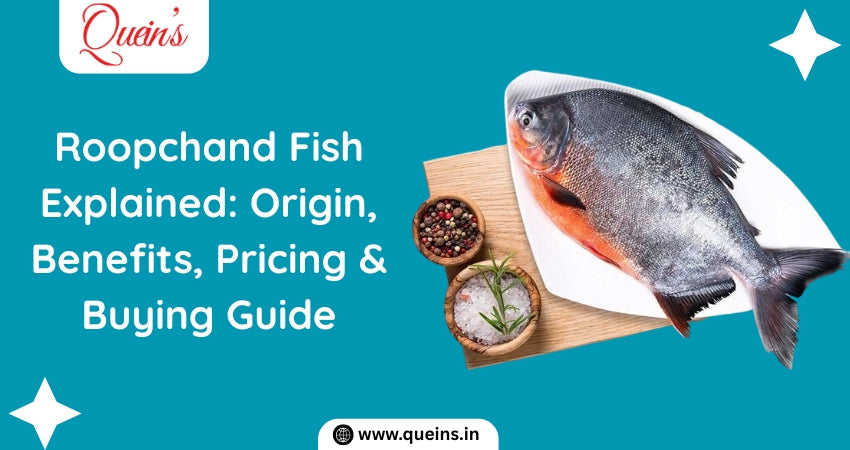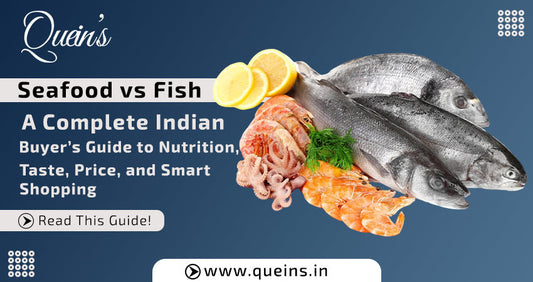
Roopchand Fish has steadily gained popularity across Indian households due to its affordability, mild taste, and visual appeal. Often confused with other varieties or overlooked for its low price, Roopchand actually offers several health benefits that are not widely known. In this guide, we dive deep into the world of Roopchand—understanding its origin, uses, nutritional value, and why it remains a cost-effective option for daily meals.
Roopchand Fish Origin:
The Roopchand fish, also known as Pacific Red Snapper or Chinese Pomfret in some regions, is typically farmed in freshwater ponds across Southeast Asia, particularly in countries like Vietnam, Thailand, and Indonesia. It has also become a part of aquaculture farms in India due to its resilience, fast growth rate, and high demand. Its unique red-pink sheen gives it an appealing look that resembles costlier sea fishes.
Roopchand Fish Alias Name:
This fish goes by multiple names depending on the region. In local markets, you might hear it called Pacific Snapper, Red Tilapia, or even Chinese Pomfret. Though not a true Pomfret, its shape and color make it resemble one, leading to misidentification. In scientific terms, it is often referred to as the Pacific Red Snapper.
Roopchand Fish Benefits:
Despite being a budget-friendly option, Roopchand is nutritionally rich. It contains a decent amount of protein, omega-3 fatty acids, and essential vitamins and minerals such as Vitamin D, B12, and phosphorus. These nutrients contribute to improved heart health, better bone density, and brain function. The low-calorie profile also makes it suitable for those on a weight-management diet.
Key Health Benefits Include:
- Improves heart health with omega-3s
- Supports brain development and memory
- Aids in weight loss due to lean protein
- Provides Vitamin D for stronger bones
- Lowers bad cholesterol levels
Why It Is Cheaper:
One of the most asked questions is—why is Roopchand fish so affordable? The answer lies in its farming. Unlike wild-caught fishes that are subject to seasonal availability, Roopchand is intensively farmed in controlled aquaculture environments. This ensures consistent year-round production and keeps the cost of supply low. Additionally, it requires less feed, adapts quickly to local waters, and has a fast growth cycle—all factors that reduce cost without compromising quality.
Roopchand vs. Other Popular Fishes:
Compared to Pomfret or Surmai, Roopchand may lack the premium branding, but it holds its own in terms of taste, texture, and nutritional content. While Pomfret is more delicate and Surmai has a stronger flavor, Roopchand offers a balanced middle ground, making it suitable for curries, grilling, and frying alike.
| Fish Type | Protein (per 100g) | Omega-3 (mg) | Price (per kg) | Bone Content | Texture |
|---|---|---|---|---|---|
| Roopchand | 18-20g | 500-700 mg | ₹200–₹300 | Few, soft | Mild, flaky |
| Pomfret | 20-22g | 700-900 mg | ₹500–₹1000 | Very few | Soft, buttery |
| Surmai | 21-23g | 900-1200 mg | ₹700–₹1200 | Few | Firm, meaty |
How to Identify Fresh Roopchand:
Fresh Roopchand fish should have clear eyes, red gills, and a firm, glossy body. The skin should not have any dullness or bruising. Avoid fish that smells overly fishy or feels slimy to the touch. When buying from a fishmonger or online, make sure the fish is vacuum-packed or stored on ice.
Cooking with Roopchand Fish:
Roopchand’s neutral flavor allows it to absorb spices well, making it ideal for various Indian recipes. Whether it’s a Bengali mustard curry, South Indian fish fry, or Goan coconut-based gravy, Roopchand adapts beautifully. Its firm texture ensures it doesn’t break apart during cooking, even in pressure-cooked dishes.
Popular Cooking Methods:
- Shallow fry with turmeric and spices
- Bake with herbs and olive oil
- Gravy-based curry with tamarind or mustard
- Steam with garlic and lemon
Is Roopchand Fish Safe to Eat? Yes, Roopchand fish is generally considered safe. It’s low in mercury and other heavy metals, especially when farmed responsibly. However, like any farmed fish, its quality depends on the practices of the hatchery. Buying from verified suppliers like Quein’s ensures you're getting clean, tested, and fresh produce.
Roopchand Fish by Online – Where to Buy?
With the rise of online seafood platforms, buying Roopchand fish has become easier than ever. At Quein’s, we deliver cleaned, portioned, and vacuum-packed Roopchand fish across major cities. Our cold-chain delivery ensures freshness is maintained from pond to plate.
Why Buy from Quein’s:
- Hygienic packaging & processing
- Farm-fresh, chemical-free sourcing
- Affordable pricing with doorstep delivery
- Trusted by thousands of seafood lovers
Sustainability of Roopchand Farming: One of the advantages of Roopchand fish is that it can be sustainably farmed with minimal environmental impact. It requires less feed and water compared to other aquaculture species. Responsible farming practices, like those followed by Quein’s partners, ensure that the fish you eat is not only safe but also environmentally friendly.
Final Verdict – Should You Try Roopchand Fish?
Absolutely. If you're looking for a nutritious, affordable, and easy-to-cook fish, Roopchand is a smart choice. It may not carry the same prestige as Pomfret or Salmon, but it does the job wonderfully—especially when sourced from a reliable online store like Quein’s.
Experience the goodness of Roopchand fish at home. Order today from www.queins.in or WhatsApp us at +91-9780710045 for bulk and home orders.



